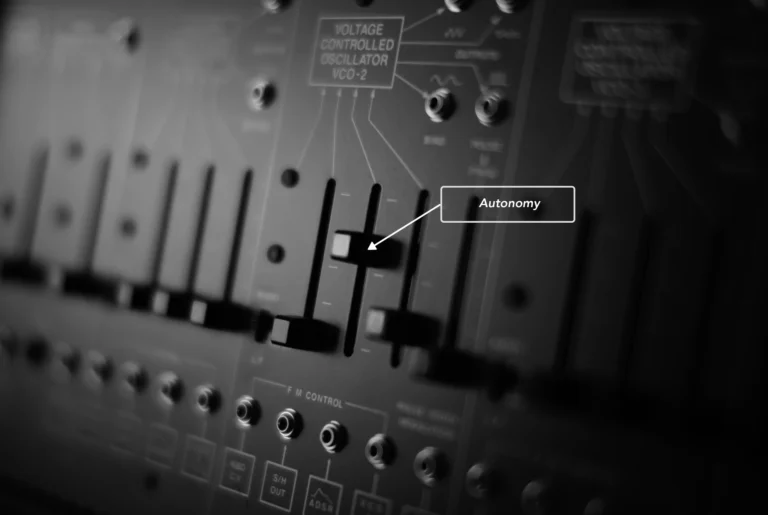So you’re considering 5G for robotics operations, but not sure of where to start or what the benefits of switching to 5G are?
You aren’t alone in those decisions. Since the introduction of 5G in 2019, companies that utilize robots in their everyday operations have been reconsidering their current network solution.
For many of these companies, connectivity and network quality are a constant consideration. With 5G becoming more accessible since its debut, the conversation has heated up even more, posing the question: what are the true advantages of using 5G for robotics?
Robots-as-a-service (RaaS) companies know that WiFi can present certain challenges when it comes to their operations. Gaps in connectivity, handoffs, and any delays as a result can contribute to an overall loss of productivity that can impact end customers- the opposite intention of utilizing autonomous robots.
Although there are current alternatives to 5G, such as Wifi and 4G, each has its own set of tradeoffs robot operators are tasked to deal with. And while there’s no one-size-fits-all solution, the introduction of 5G offers a way to reduce the common issues faced by robotic operations and prepare for a future of high-speed connectivity that is already upon us.
Current Solutions
There’s a large variety of network solutions being utilized by companies in their day-to-day robot operations- each having their own quirks to deal with, yet unfortunately, none offering the perfect solution to connectivity gaps and delays robot operators already tolerate.
To better understand these options, let’s take a deeper dive into the current solutions in the robotics landscape.
Operating with no connectivity
Some robotic devices operate without internet or a network, often because the work they are doing is simple and doesn’t require internet connectivity. An example of this is a device like a Roomba, which can operate entirely offline. For most devices, however, operating without connectivity can be a detriment to the explorability of data, as it will need to be stored on the device until removed, complicating overall ingestion as the data will be difficult to sort through.
Operating solely on Wifi
Wifi is a good solution for stationary robots or very small spaces, and has the added advantage of using network hardware that can be easily found at local hardware stores and have zero costs for bandwidth. However, it does pose problems at scale.
Jumping from Wifi point to Wifi point can be challenging for devices. In addition, it’s difficult to ensure 100% coverage with Wifi, causing critical issues with gaps in connectivity that can limit the movement of robots during teleoperation.
For example, in a warehouse setting Wifi may be largely available in the general space, yet some corners or isolated areas may have no Wifi at all. When a robot experiences a connectivity gap, the operator may lose data and observability from however long the connection was lost meaning they would have no clues as to what could have caused a potential issue during the blackout.
Also, due to the nature of Wifi and its dependency on power, operators also run the risk of Wifi outages that can stop the entire fleet from functioning and stalling progress entirely. This can be caused by weather conditions, internet congestion, human error, and more; all factors outside the control of operators but still need to be constantly kept in mind.
Operating solely on 4G
Unlike Wifi, 4G doesn’t have a limited range meaning robots can move about freely without the worry of sudden connectivity issues. However this option is not without its flaws, particularly when it comes to data ingestion.
During peak usage times, especially within a crowded company site, network operators may “deprioritize” certain users, slowing data speeds down to control the congestion. Depending on the use case, less bandwidth can range from being a minor annoyance (requiring on-demand data ingestion or video buffering) to a critical issue (real-time telop no longer being “real time”).
Operating on 4G & indoor Wifi
Is two really better than one?
While it may seem like 4G and Wifi would work well in tandem, they still experience some difficulties, particularly surrounding handoffs. Although consistent connectivity will exist, when robots switch between Wifi and the network, there may be interruptions in real-time experiences, but data ingestion will luckily not be affected.
Aside from delays, configuring the two to work together can be complicated. Ensuring the robot processes and adapts to the change correctly can cause more of a headache than its worth.

What are the advantages of 5G for robotics?
Now that we’ve reviewed the current solutions, the question still remains: what advantages does 5G have that the other options don’t?
5G runs at a much higher speed that 4G, at speeds as high as 20 gigabits per second. Although throttling can still occur on 5G, providers such as T-Mobile offer plan options that do away with this so users can enjoy constant high speeds. These enhanced speeds will help to enable high quality teleop experiences (especially for video) and reduce latency for data ingestion.
On top of a smoother experience, 5G can offer a huge advantage to RaaS businesses when it comes to selling their product. With expanded network coverage and speeds, RaaS businesses can sell a wider variety of customers. For example, the availability of a private 5G network would help a RaaS business to run robots on a site that previously wasn’t served by a network, such as a farm or construction site, whereas before 5G, robotic operations were limited by the lack of stable connections outdoors.
Network slicing, a new option with 5G, is improving outdoor connectivity for businesses that deploy robots in public spaces, such as parks. This feature allows both virtualized and independent networks to be created on top of a common physical infrastructure, giving for example, a fleet of automated lawnmowers, greater bandwidth and widened connectivity.
What once seemed impossible is now a RaaS business’s dream: they can offer a variety of customers a more high-performing robot regardless of environment.
Nokia, a leader in the telecommunications industry, echoes this change and how it will push robots and the companies that use them toward enhanced productivity, stating, “Robots will develop greater autonomy as time-sensitive networking in 5G connects them to intelligence in the edge cloud. This will open up more opportunities for them to undertake hazardous and repetitive tasks.”
Robotic operations and the tasks it seeks to undertake need a solution that will last, and allow them to handle the increasing variety of networking conditions we now operate in and provide a high quality experience that enables their customers that weren’t accessible before.
Getting started with 5G for robotics
If you’re considering 5G, you have a few options to decide between first.
Much of your decision will be based on the level of security needed surrounding the data your robots will be ingesting. Public 5G networks are available on any device that can connect to it, and is very easy to start using for robot operators with minimal hurdles needed to clear for access. For companies who use robots in an isolated place, such as a construction site, private 5G provides wider coverage and bandwidth priority, all on their own network.
It’s important to remember that connecting to 5G requires more than getting on the network- robots utilizing the network will require hardware updates including updating modems to 5G modems to function properly. Additionally, it’s vital to know that the cost of public vs a private network will vary. When budgeting for switching over, also be mindful of overall bandwidth costs and the price of hardware that needs to be installed onto robots.
5G plays a critical role in the performance of robot operations infrastructure and the future success of your robotic fleet. If you are looking to upgrade your operations to 5G or optimize your robot data ingestion, Formant partners with the following 5G providers to provide a complete solution for robotics infrastructure and network to our customers: NTT, Qualcomm, and Hologram.



